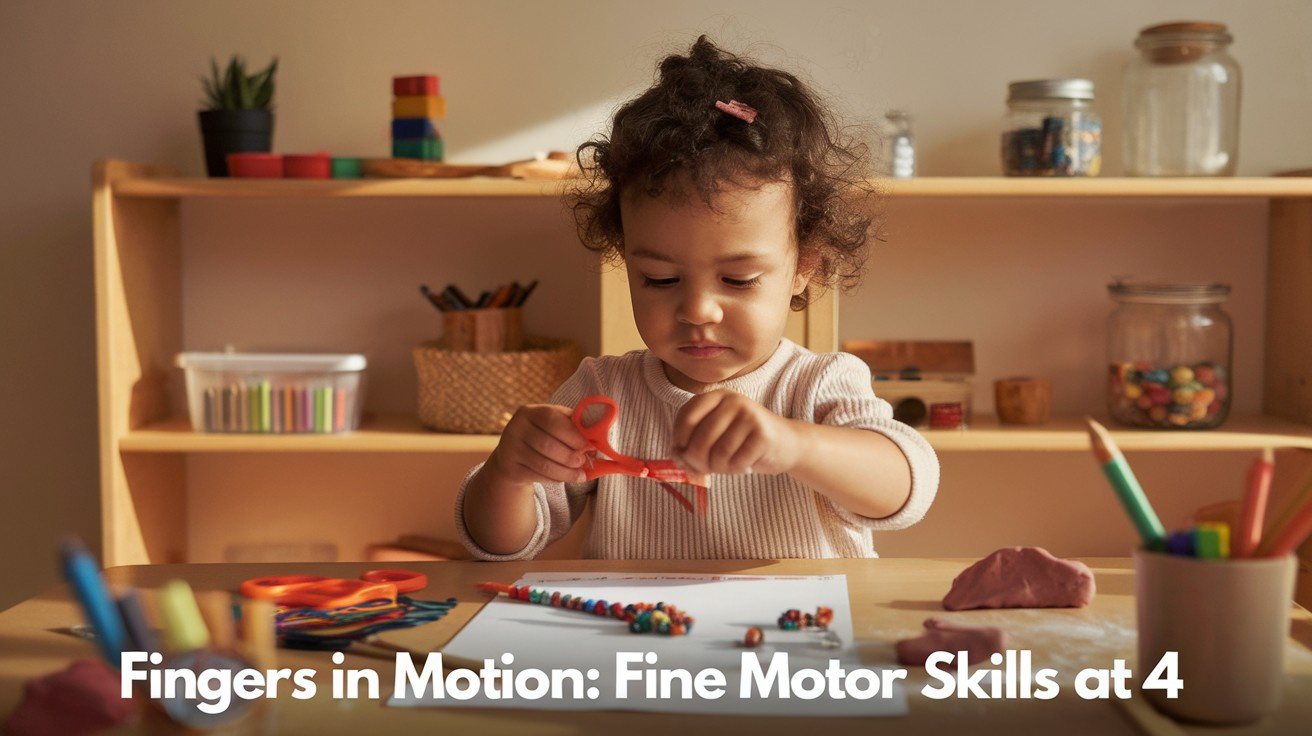
Is your 4-year-old struggling with scissors or still gripping crayons with a full fist? You’re not alone!
The preschool years mark an explosion in fine motor development—those crucial hand and finger skills that alter clumsy grasping into the precise movements needed for everything from zipping jackets to writing their names.
These tiny movements have an enormous impact. Research shows that fine motor development directly predicts kindergarten readiness and early academic success.
Yet, many parents overlook these skills while focusing on letters and numbers. Are you wondering if your child is on track? Are you looking for simple, screen-free activities that strengthen little fingers?
Support your 4-year-old’s growing independence with this expert-backed guide to fine motor skills, featuring fun activities that fit right into daily life.
What Are Fine Motor Skills?
Fine motor skills involve the small muscles of the hands and fingers that enable precise movements like grasping, manipulating objects, and hand-eye coordination.
For 4-year-olds, these skills are crucial for daily tasks such as buttoning clothes, using utensils, and learning to write.
Unlike gross motor skills, which involve large muscle movements for activities like running or jumping, fine motor skills focus on dexterity and precision.
Development progresses from reflexive grasping in infancy to scribbling at age 1, basic cutting at age 3, and increased control for drawing shapes and letters by age 4.
These skills build the foundation for academic success and independence in self-care activities.
Fine Motor Milestones for 4-Year-Olds
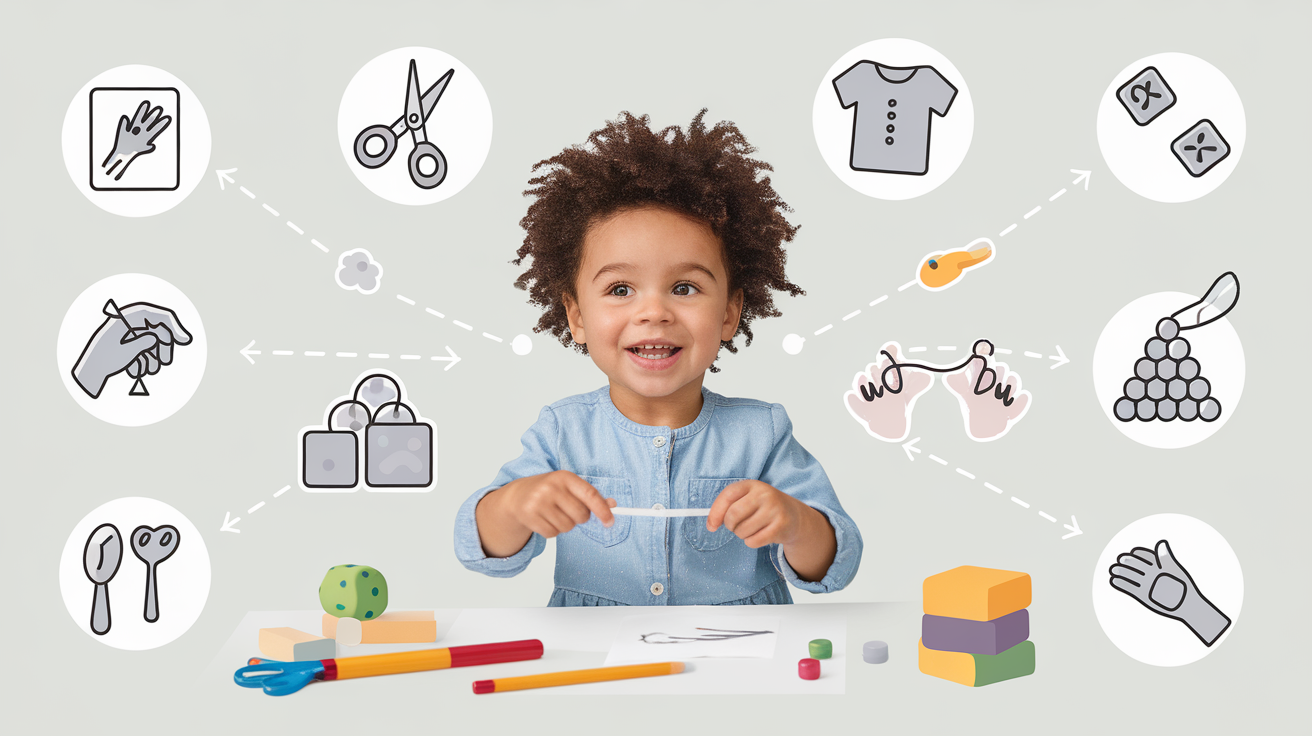
By age four, most children have achieved remarkable fine motor control. They can typically hold crayons with a mature grip, cut along straight lines with scissors, and manipulate small objects with increasing precision.
Four-year-olds have usually mastered basic self-help skills like unzipping jackets, washing hands independently, and eating with utensils.
Many can successfully build block towers of 10+ blocks and complete simple puzzles with ease.
Currently, they’re developing more refined skills, such as cutting along curved lines, threading smaller beads, copying simple shapes, tracing letters, and buttoning medium-sized buttons. Their drawings are becoming more intentional and recognizable.
By age five, expect your child to tie shoelaces, print some letters and numbers, color within lines, cut out basic shapes, and use a dominant hand consistently.
These developments prepare them for the writing and crafting demands of kindergarten.
Preparing for Kindergarten: Fine Motor Skills Needed

Kindergarten represents a significant milestone in your child’s education, and fine motor skills play a crucial role in this transition.
Understanding what’s expected can help you support your 4-year-old’s development before they enter the classroom.
1. What Kindergarten Teachers Expect
Kindergarten teachers expect children to have basic fine motor skills, such as holding a pencil correctly, using scissors with control, and managing small objects independently.
They also value the ability to focus on fine motor tasks for 10–15 minutes. While not expecting perfection, significant struggles may lead to challenges with everyday classroom activities.
2. Pre-writing Skills to Practice
Developing writing readiness involves building fine motor skills through fun, hands-on activities. Encourage the tripod pencil grip with short crayons or pencils during drawing.
Practice tracing shapes like circles and lines, which support letter formation. Strengthen hand muscles using playdough or tweezers, and improve hand-eye coordination with sticker or dot-to-dot tasks.
3. Self-help Skills Related to Fine Motor Development
Kindergarten demands a level of independence that relies on fine motor skills. Tasks like buttoning jackets, using the bathroom, opening lunch containers, and organizing supplies all require coordination.
When children can manage these responsibilities independently, they build confidence and are better able to focus on learning and participating in the classroom.
4. Creating a Kindergarten Readiness Plan
In the months before kindergarten, build a simple daily routine that includes 10–15 minutes of fine motor practice through drawing, cutting, or small object play.
Encourage independence with self-help tasks and simulate classroom routines. Focus on playful, hands-on experiences to build confidence—not academics—to support your child’s success in school.
Why Do Fine Motor Skills Matter for Preschoolers?
Fine motor skills are foundational for preschoolers’ success in kindergarten and beyond.
These skills directly impact school readiness as they enable children to manipulate classroom tools like scissors, glue sticks, and writing implements—essential for participating in learning activities.
Fine motor development supports self-care independence in daily life, allowing children to dress themselves, manage bathroom needs, and eat independently.
These abilities foster confidence and reduce frustration in both home and school environments. Handwriting development depends heavily on fine motor control.
Before children can form letters, they need the dexterity and hand strength that comes from activities like drawing, cutting, and manipulating small objects.
As preschoolers master these skills, they gain confidence in their abilities and develop independence. This sense of accomplishment motivates them to tackle new challenges and builds the self-assurance needed for academic success.
10 Fun Activities to Develop Fine Motor Skills
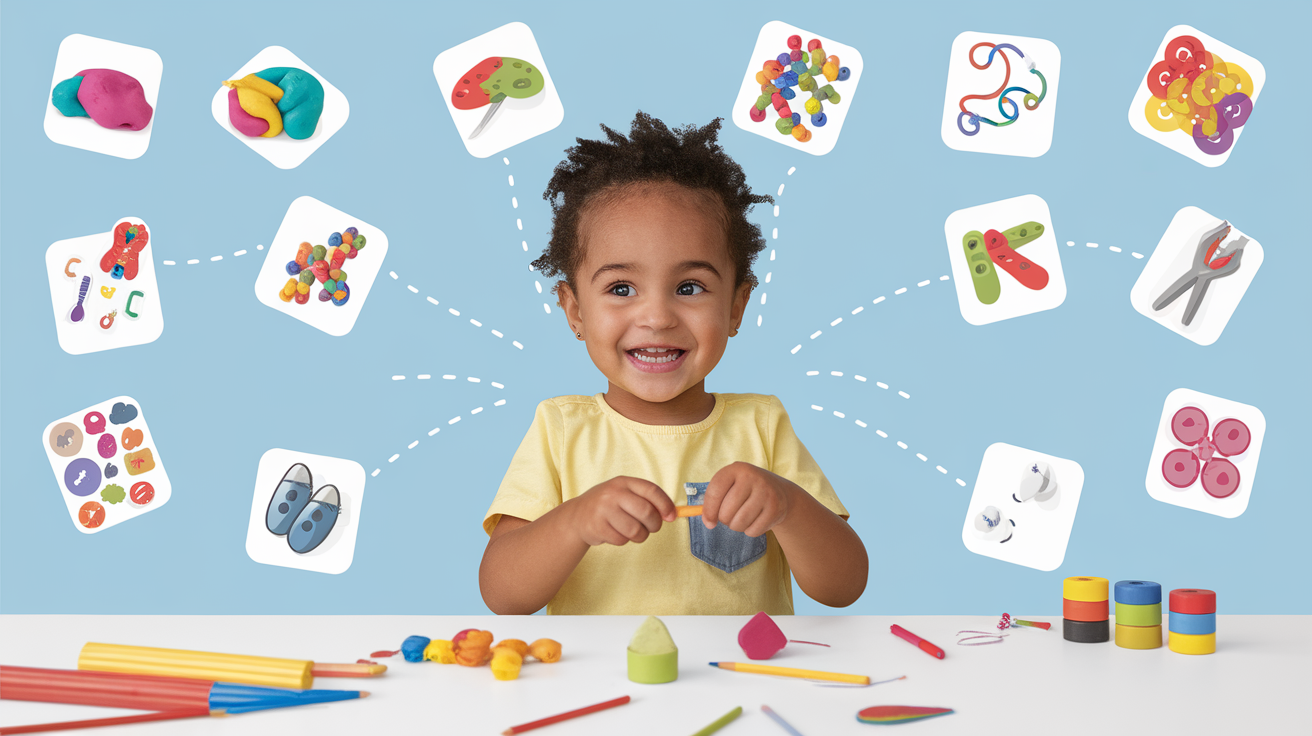
Developing fine motor skills doesn’t have to feel like work! By incorporating these engaging activities into your daily routine, you can help your 4-year-old strengthen their hand muscles, improve coordination, and build the dexterity they need for kindergarten success.
1. Tear and Paste Collages
Tearing paper requires controlled finger movements and strengthens small hand muscles. Please have your child tear colored paper into shapes and glue them onto a larger sheet to create pictures. This activity builds finger strength while encouraging creativity.
2. Beading and Stringing
Threading beads onto pipe cleaners, strings, or shoelaces develops precision and eye-hand coordination. Start with larger beads and gradually introduce smaller ones as your child’s skills improve. Create patterns for added cognitive benefits.
3. Finger Painting with Textures
Mix materials like sand or salt into finger paint to create textured art. The resistance provided by these additives strengthens finger muscles, while the sensory experience keeps children engaged longer.
4. Playdough Obstacle Courses
Create a “playdough gym” by challenging your child to roll, pinch, squeeze, and flatten dough. Add tools like plastic knives, cookie cutters, and rolling pins for varied manipulation. Try tasks like “hide five small objects in the dough for your child to find.”
5. Building Block Challenges
Using smaller blocks or connecting blocks (like Legos) requires precise finger placement and control. Challenge your child to build specific structures or create designs from simple drawings.
6. Tweezer Transfer Games
Use child-safe tweezers to move small objects (pompoms, beads, small erasers) between containers. Make it fun by creating a “rescue mission” narrative or timing how quickly they can transfer a specific number of items.
7. Kitchen Helper Activities
Involve your child in age-appropriate cooking tasks like stirring batter, kneading dough, or using cookie cutters. Sprinkle tasks like peeling clementines or breaking apart lettuce leaves into meal preparation routines.
8. Clothespin Activities
Clothespins require significant finger strength to open and close. Please have your child attach them around the edge of a container or use them to hang artwork on a display line. For added fun, paint or decorate the clothespins first.
9. Finger Puppets and Plays
Finger puppets encourage individual finger movement and control. Create simple puppets from paper or old gloves and have your child manipulate them during storytelling to strengthen finger isolation.
10. Coin Sorting and Stacking
Handling coins requires precise finger movements and develops the pincer grasp. Create sorting games where your child separates different coins or challenge them to build coin towers of increasing height.
Fine Motor Tools and Materials for Home
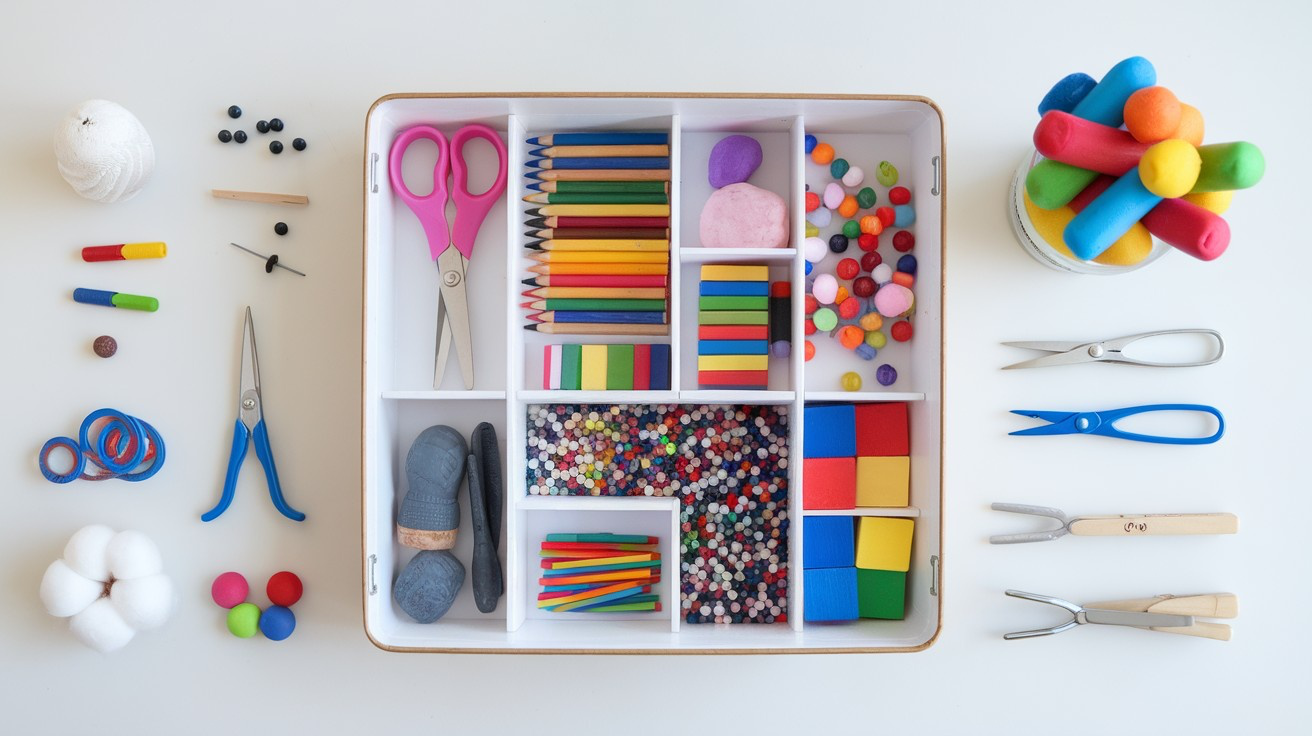
Create a well-rounded fine motor toolkit with these essential supplies: child-safe scissors, crayons, markers, playdough, beads, tweezers, eye droppers, and interlocking blocks.
Include items like clothespins, hole punchers, and child-sized tongs.
For budget-friendly alternatives, repurpose household items: use pasta for stringing, make homemade playdough, collect bottle caps for sorting, and save cardboard tubes for crafts. Rice, beans, and cotton balls are perfect materials for transfer games.
Organize your toolkit in a portable container with divided sections to keep materials accessible and organized.
Rotate items regularly to maintain interest and gradually introduce more challenging tools as your child’s skills progress.
Supporting Fine Motor Development Daily
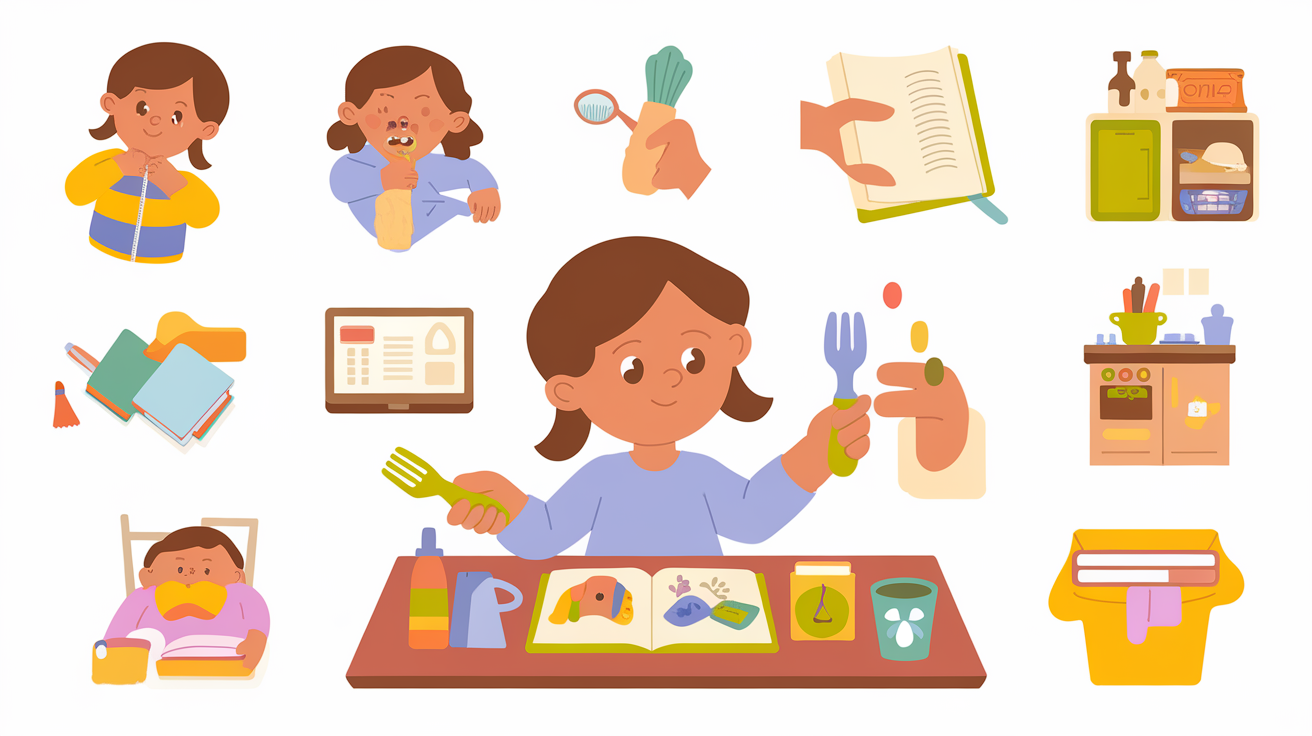
Integrate fine motor practice naturally into everyday routines by encouraging independent dressing, self-feeding, and tooth brushing.
Keep simple materials like crayons, scissors, and playdough accessible throughout your home for spontaneous use. Even routine tasks like sorting laundry, turning pages in books, or helping with cooking develop crucial hand skills.
Balance screen time with hands-on activities by setting consistent limits on devices and creating tech-free zones.
For every digital activity, offer an engaging hands-on alternative. Consider apps that complement rather than replace physical fine motor practice.
Make practice enjoyable by following your child’s interests—use favorite characters in activities, create simple games with clear goals, and adjust difficulty levels appropriately.
Focus on the process rather than perfect results, celebrating effort and improvement to keep motivation high.
Remember that short, frequent practice sessions are more effective than occasional long ones.
Signs Your Child Might Need Extra Support

While children develop at different rates, certain patterns may indicate your 4-year-old needs additional fine motor support.
Be attentive if your child consistently avoids activities requiring hand skills, shows frustration with age-appropriate tasks, or uses whole-hand grasping rather than finger control.
Potential red flags include difficulty with basic self-care skills like using utensils or handling clothing fasteners, inability to copy simple shapes, awkward pencil grip, or extreme pressure when writing and drawing.
Consistently favoring one hand for all activities or switching hands frequently during a single task also warrants attention.
How Fine Motor Skills Support Cognitive Development
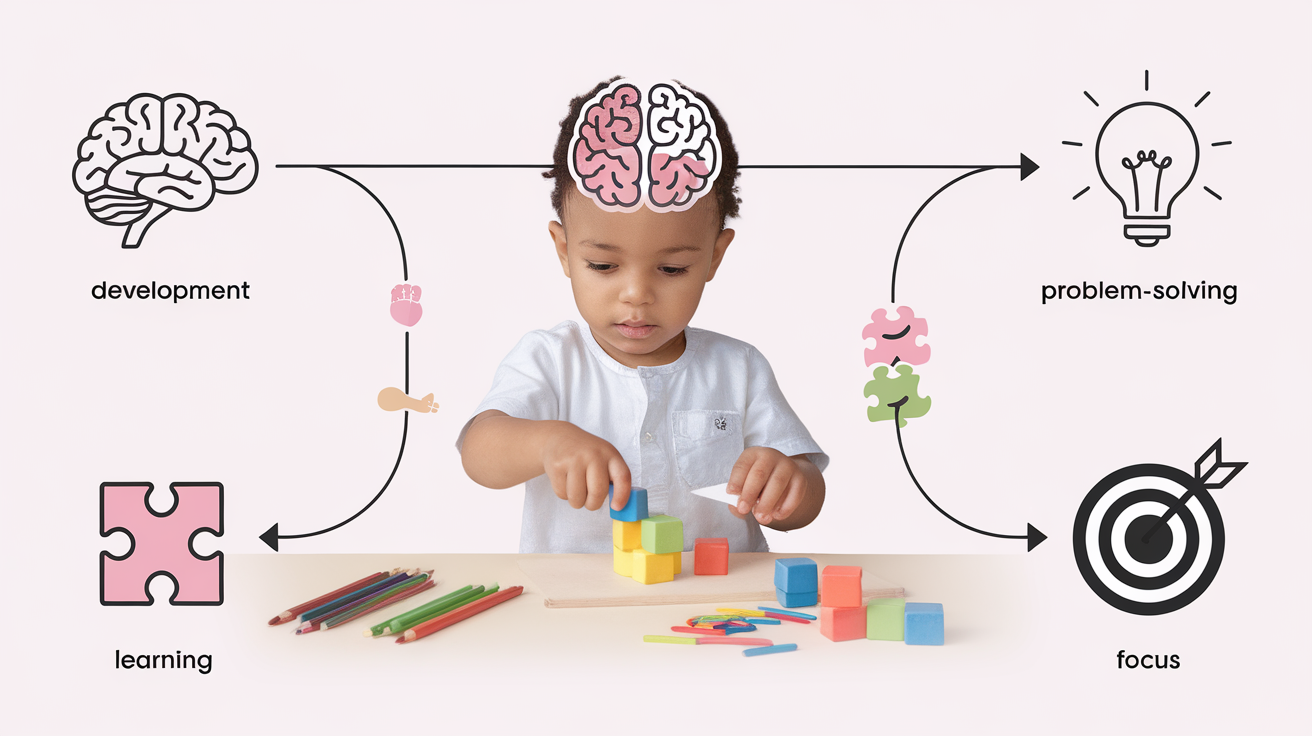
Fine motor activities do more than prepare children for writing—they actively support brain development and early learning.
The table below highlights key connections between fine motor tasks and cognitive growth in young children.
| AREA | ACTIVITY | COGNITIVE BENEFIT |
|---|---|---|
| Brain Development | Beading, small object play | Builds neural connections across brain regions |
| Focus & Control | Cutting, threading | Improves attention and self-regulation |
| Math Skills | Using counters, block play | Enhances spatial awareness and sequencing |
| Literacy Skills | Tracing, holding a pencil | Develops writing control and reading readiness |
| Science Skills | Hands-on experiments, tool use | Boosts observation and problem-solving |
Final Words
Nurturing fine motor skills in 4-year-olds creates a critical foundation for academic and life success. Through dedicated practice of pinching, grasping, and manipulating objects, children develop the coordination needed for writing, buttoning clothes, and countless daily tasks.
Engage your child in activities like threading beads, using tweezers to sort small objects, or molding play dough. Encourage coloring within lines, cutting with safety scissors, and practicing proper pencil grip.
Turn these exercises into games: “Can you pick up these tiny pom-poms with tweezers?” or “Let’s see how many paper clips you can link together!”
Remember that consistency is key. Celebrate small victories and maintain patience during challenges. By making these activities fun rather than frustrating, you’ll help your child develop confidence alongside dexterity.
What fine motor activity will you try first with your child?
If you’re interested in more informational content on mothers and babies, feel free toclick here and explore other blogs that you might enjoy.
